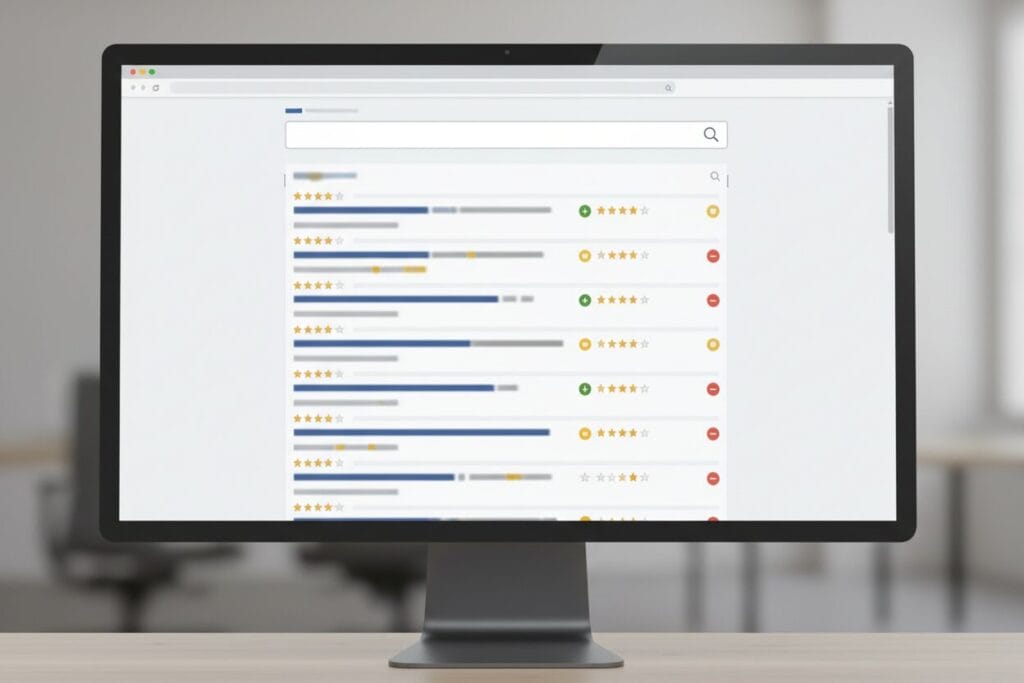One unfair review can destroy trust instantly. It doesn’t matter if it’s false, exaggerated, taken out of context, or written by someone who was never part of your program. Parents don’t investigate—they react.
Removing negative reviews—legally and ethically—isn’t about “managing optics.” It’s about protecting families from misinformation and ensuring your admissions team isn’t being quietly sabotaged by content that shouldn’t be online in the first place.
Why One Negative Review Can Tank Admissions Overnight
Parents are in crisis. They’re scared, tired, and overloaded. When they search your program and see a harsh review—especially one written emotionally—they assume the worst.
- “This place might not be safe.”
- “I can’t risk my son or daughter here.”
- “There are too many other options to take the chance.”
Parents judge your entire program by the worst thing they can find online. One review can outweigh everything else.
This is why removing negative reviews—when they’re false, misleading, or policy-violating—is a critical part of reputation repair for residential treatment centers.

What You Can Remove (And Exactly How the Rules Work)
Google, Facebook, and industry sites all allow removal of content that violates policies. The key is knowing what qualifies and how to document it.
Reviews eligible for removal include:
- False or fabricated claims
- Reviews from people who were never enrolled
- Second-hand stories (“my cousin heard…”)
- Doxxing or revealing personal details
- Harassment, hate, or targeted attacks
- Competitor reviews
- Content written by former employees with clear bias
Examples of violations:
- Claims stated as fact without proof
- Accusations involving minors (platforms take this seriously)
- Coordinated attacks from activist groups
- Reviews copied across platforms word-for-word
If you’re dealing with a pattern of false reviews, see:
How to Handle Online Attacks.
How to Request Removal on Major Platforms
Each platform has its own rules, but the strategy is the same: document everything, cite violations, and escalate when needed.
Removing Reviews on Google
- Flag the review directly in your Business Profile
- Select the violation that applies
- Submit a second detailed report through Google support
- If needed, escalate via Google Business Profile support with evidence
Removing Reviews on Facebook
- Report a review for policy violation
- Provide documentation if requested
- Respond calmly or leave it unanswered depending on the severity
Removing Reviews on BBB & Industry Sites
Behavioral health–specific sites have different rules. Some require:
- Proof of non-involvement
- Proof the reviewer is not a client
- Evidence of defamation
- Legal counsel involvement (rare but sometimes necessary)
What To Do When a Review Can’t Be Removed
Not all reviews come down—even when they should. That doesn’t mean you’re stuck with them.
1. Bury it under stronger content
Publish transparent, high-authority content that Google ranks above the negative review. (This is where content + SEO matter.)
2. Respond strategically—not emotionally
The goal is not to convince the reviewer. It’s to communicate calmness, professionalism, and safety to future parents.
3. Build parent-trust pages
These outperform corporate “About Us” pages 10:1 in restoring confidence.
4. Strengthen your overall reputation footprint
More credible, recent feedback weakens the impact of a single negative review dramatically.
The Mistakes That Make Bad Reviews Worse
Programs often panic and respond in ways that backfire:
- Arguing publicly with the reviewer
- Threatening legal action in comments
- Responding defensively or emotionally
- Posting templated corporate messages
- Denying everything without context
Parents don’t need you to be perfect. They need to see how you handle imperfection.
How Removing Negative Reviews Directly Impacts Admissions
When harmful reviews disappear—or lose credibility—your admissions process becomes dramatically healthier:
- Families feel safer reaching out
- Decision timelines shorten
- Consultants regain confidence in referring
- Search results reflect the truth, not the loudest voices
Reputation and admissions are inseparable. Fix one, and the other improves fast.
If You’re Dealing with Unfair or Harmful Reviews
You don’t have to live with damaging content just because it’s online. You have options—and many programs don’t realize how much can be removed or suppressed with the right approach.
Request a Review Removal Assessment
Or, if you’re dealing with a bigger pattern of attacks, start here:
Reputation Repair for Residential Treatment Centers.












